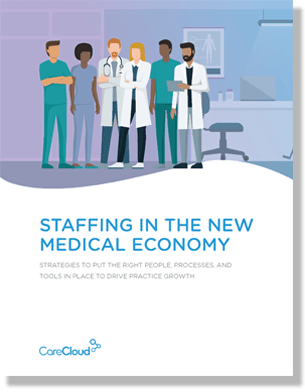By Sal Casillas
New value-driven reimbursement models are a major force for transformation in the healthcare sector
Note: The following article is an extension of one of five key trends highlighted in a larger briefing report available for download here: The New Medical Economy.
Whether it’s the Centers for Medicare & Medicaid Services (CMS), the Department of Veterans Affairs (VA), commercial plans, or consumers, everyone bearing financial risk for healthcare is accelerating value-based care and administrative cost reduction initiatives — aggressively. After being discussed in theory for decades and tested with models like patient-centered medical homes, pay-for-performance, and outcomes-based revenue models are now a reality.
“Medicare has joined private health insurers including Aetna, Anthem, UnitedHealth Group, and the nation’s Blue Cross and Blue Shield plans to move away from fee-for-service medicine, a system that pays doctors and hospitals based on volume of care delivered,” reported Forbes.
In 2014, 20 percent of costs for the more than 50 million patients on Medicare were financed through value-based payments. That grew to 30 percent at the start of 2016, and HHS has issued a goal of 85 percent by the start of 2017. While the future of the Affordable Care Act (ACA) is unclear, value-driven programs such as the Medicare Access and CHIP Reauthorization Act (MACRA) and the Merit-based Incentive Payment System (MIPS) are backed with bipartisan support on Capitol Hill.
Managing for quality and removing unnecessary costs from the system requires a whole new level of data sharing and collaboration between payers, providers, and consumers. Open platforms that facilitate information flow in a secure, compliant way are essential to success in a value-based system of care. Entrepreneurial-minded medical practice leaders are looking at intelligent apps to turn data into user-friendly tools to support care coordination and decision-making.
“We realize surprises are costly. Surprises are unexpected complications in the patient’s recovery. Infection after the surgery translates to additional care and resources for the patient’s safe recovery. Because our practice receives a set amount under the value-based system, the complications are ultimately paid by the practice. Being at the forefront of patient education is fundamentally crucial for us to avoid any patients experiencing a treatment failure,” said Benita Tapia, practice administrator at 90210 Medical Group.
What to watch:
The shift to outcomes-based payments has been a boon to primary care providers who now lead a crucial part of the patient care lifecycle. With this attention, look for more innovation and more investment from family practice medical groups. Also, follow health technology companies focusing on care experience that follows patients outside of the exam room or hospital ward.
Read more about five key trends driving The New Medical Economy in this free briefing paper available for download from CareCloud today.




